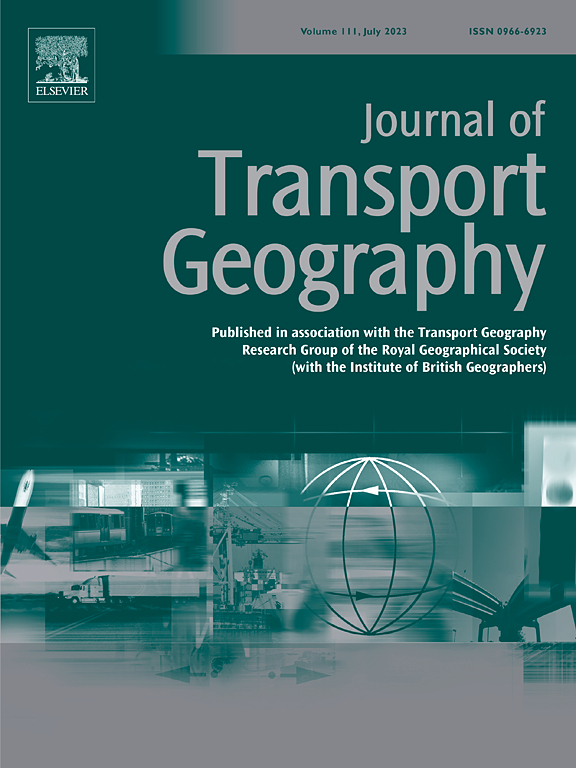交通网络的网络中心性和交通安全:美国铁路公司的证据
IF 5.7
2区 工程技术
Q1 ECONOMICS
引用次数: 0
摘要
由于铁路事故造成巨大的人员和经济损失,铁路安全至关重要。在过去十年里,美国发生了1000多起事故,美国铁路公司的铁路事故仍然是一个主要问题。这凸显了行业必须紧急解决的持续安全挑战。网络中心性度量如何解释交通网络中的交通安全?在这项工作中,我们对四种网络中心性措施对美国铁路网事故频率影响的力量和意义进行了实证调查。利用2010 - 2020年美国高速公路铁路平交道口(HRGC)和美铁(Amtrak)交通事故的两个数据集,采用先进的空间计量模型,我们发现车站的加权度中心性(强度)和局部聚类系数对事故发生频率没有显著影响。有趣的是,车站加权中间度中心性和k-core指数对交通事故数量存在强烈的正显著影响。在这个分析中,美国铁路公司车站的事故是指发生在最近的高速公路铁路平交道口(HRGC)站点的事故。我们的研究结果有助于交通安全研究的发展,并为决策者和交通分析师提供有价值的见解,以确定潜在的事故热点,并加强铁路网络的安全干预。本文章由计算机程序翻译,如有差异,请以英文原文为准。
Network centralities and traffic safety in transportation networks: Evidence from the Amtrak railways
Railway safety is crucial due to the significant human and economic costs of railway crashes. With more than 1000 accidents reported in the last decade in the United States, railway crashes along the Amtrak remain a major concern. This underscores an ongoing safety challenge that the industry must urgently address. How do network centrality measures explain traffic safety in transportation networks? In this work, we conduct an empirical investigation on the power and significance of the impact of four network centrality measures on the frequency of crashes in the USA's railway network. Leveraging two datasets on railway crashes at U.S. highway-rail grade crossings (HRGC) and Amtrak traffic from 2010 to 2020 and employing advanced spatial econometric models, we show that a station's weighted degree centrality (strength) and local clustering coefficient have no significant impact on the frequency of crashes. Interestingly, there exists a strong and positively significant effect of the weighted betweenness centrality and k-core index of the station on the number of crashes. In this analysis, a crash at an Amtrak station refers to an incident occurring at the nearest highway-rail grade crossing (HRGC) site. Our findings contribute to the growing body of research on transportation safety and offer valuable insights for policymakers and traffic analysts in identifying potential crash hotspots and enhancing safety interventions in the railway network.
求助全文
通过发布文献求助,成功后即可免费获取论文全文。
去求助
来源期刊

Journal of Transport Geography
Multiple-
CiteScore
11.50
自引率
11.50%
发文量
197
期刊介绍:
A major resurgence has occurred in transport geography in the wake of political and policy changes, huge transport infrastructure projects and responses to urban traffic congestion. The Journal of Transport Geography provides a central focus for developments in this rapidly expanding sub-discipline.
 求助内容:
求助内容: 应助结果提醒方式:
应助结果提醒方式:


